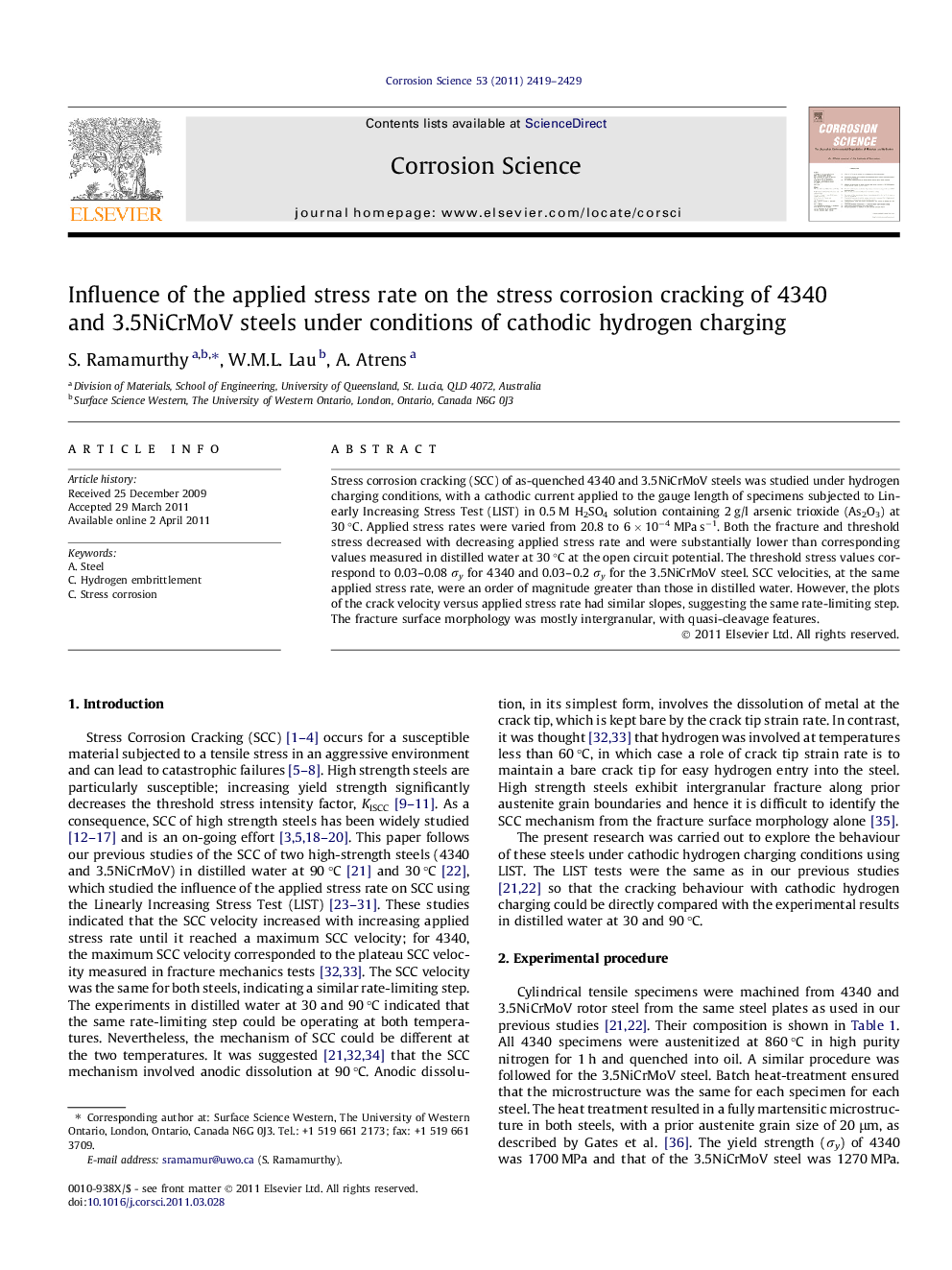| Article ID | Journal | Published Year | Pages | File Type |
|---|---|---|---|---|
| 1470002 | Corrosion Science | 2011 | 11 Pages |
Stress corrosion cracking (SCC) of as-quenched 4340 and 3.5NiCrMoV steels was studied under hydrogen charging conditions, with a cathodic current applied to the gauge length of specimens subjected to Linearly Increasing Stress Test (LIST) in 0.5 M H2SO4 solution containing 2 g/l arsenic trioxide (As2O3) at 30 °C. Applied stress rates were varied from 20.8 to 6 × 10−4 MPa s−1. Both the fracture and threshold stress decreased with decreasing applied stress rate and were substantially lower than corresponding values measured in distilled water at 30 °C at the open circuit potential. The threshold stress values correspond to 0.03–0.08 σy for 4340 and 0.03–0.2 σy for the 3.5NiCrMoV steel. SCC velocities, at the same applied stress rate, were an order of magnitude greater than those in distilled water. However, the plots of the crack velocity versus applied stress rate had similar slopes, suggesting the same rate-limiting step. The fracture surface morphology was mostly intergranular, with quasi-cleavage features.
► Applied stress rate effect on SCC under hydrogen charging condition investigated. ► Fracture and threshold stresses much lower compared to 30 °C water data. ► Applied stress rates also controlled crack tip strain rate and crack velocity. ► SCC velocities an order of magnitude greater than those in 30 °C water. ► Rate limiting step controlled by applied stress rate, not by steel composition.
